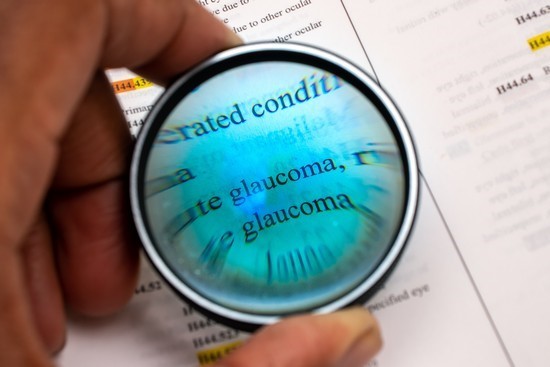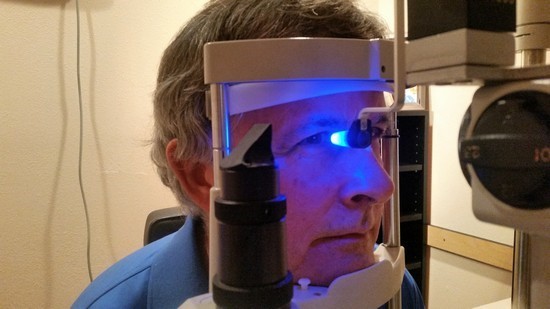Eyes are among the most used sensory organs.
Any
disease, condition, or trauma that affects our vision can have a serious
negative impact on the quality of our life. Across the globe, it is estimated
that in 2020, 80 million people had glaucoma the number of cases was expected
to increase to 111 million by 2040. Each year, January is the glaucoma-awareness
month; it is an attempt to educate the general population and potentially lower
the number of cases.
اضافة اعلان
What is glaucoma?
Glaucoma is a group of eye conditions that damage
the optic nerve, which functions as a highway of information for visual stimuli
and delivers information from the eyes to the brain. Any damage to the optic
nerve results in vision loss, and as the disease progresses, it may result in
blindless. Fortunately, if the disease is diagnosed early on, additional vision
loss may be prevented.
 (Photo: Envato Elements)
(Photo: Envato Elements)
Currently, glaucoma is the second leading cause
of blindness around the world and the third leading cause of blindness in
Jordanian adults.
Anatomy of the eye
The eye has two chambers that are filled with
fluid, with a lens that serves as a divider. The space between the cornea (the
outermost part of the
eye) and the lens is filled with a clear watery fluid
known as aqueous humor. The aqueous humor is responsible for maintaining the
spherical shape of the eye as well as for providing nutrients to the structures
contained within.
In order to maintain the appropriate pressure
and resupply nutrients, the aqueous humor needs to drain and fill in balance. The
two main structures responsible for draining aqueous humor are the trabecular
meshwork and the uveoscleral outflow.
How does glaucoma cause blindness?
Glaucoma is traditionally characterized by
increased intraocular pressure (IOP). Although this pressure in the eye is
often a main characteristic of glaucoma, it may not always be present,
therefore glaucoma may be more accurately defined by the
damage to the optic
nerve. Given the broad definition, there are multiple ways in which glaucoma
may present, the two most common being open-angle glaucoma (OAG) and
angle-closure glaucoma (ACG). The main difference between these two types is
the angle formed between the cornea and the iris, which is the colored portion
of the eye and rests atop the lens.
 (Photo: Envato Elements)
(Photo: Envato Elements)
In OAG, the iris is in the correct position and
the uveoscleral drainage canals are clear, but the trabecular meshwork has
impaired draining. In ACG, on the other hand, the iris is pressed against the
cornea, which blocks the uveoscleral drains as well as the trabecular meshwork.
For those with ACG, the main cause of increased IOP is largely due to improper
drainage that results from damage and scarring of the drainage structures. In
both of these disease, increased IOP is the major cause for optic nerve damage.
Risk factors for glaucoma
The exact causes of glaucoma are not fully
understood, but there are certain risk factors associated with it. Generally,
age is an important risk factor. Those older than 60 tend to be at greater risk
of developing glaucoma of either type. Race also determines the type of
glaucoma that is most prevalent. In the white and black population, OAG is most
common, whereas ACG is more common in
Asian populations. Furthermore, the
prevalence of OAG in the black population is three times higher than in the white
population. Finally, having a family history of glaucoma may increase your
risk.
Currently, glaucoma is the second leading cause of blindness around the world and the third leading cause of blindness in Jordanian adults.
Although the exact cause has yet to be
identified, it is believed that there is a genetic component involved. Additionally,
a mutation in the myocilin gene has been identified in some cases of OAG,
further suggesting that genetics play a role in disease development. More
specific to OAG, certain systemic conditions may increase the risk of
developing glaucoma, such as diabetes, hypertension, and preexisting condition
that result in increased IOP. In ACG, those who are farsighted, are taking
certain medications, and the female population are at greater risk of
developing glaucoma.
Symptoms of glaucoma
Symptoms of glaucoma vary, depending on the
type. For example, in OAG, symptoms are rare and the disease is often diagnosed
by chance during routine eye exams. In ACG, the onset is often rapid, and
symptoms are likely experienced. Common symptoms in ACG include decreased
vision, halos around lights, headaches, severe eye pain, nausea, and vomiting.
How to prevent glaucoma
Early detection of the disease is important as
it will allow for treatment before the onset of severe optic damage, which may
result in complete blindness. Early detection is done by regular comprehensive
eye exams and scheduling may be based on your doctor’s medical opinion. In
general, the
American Academy of Ophthalmology (AAO) recommends comprehensive
eye exams based on age as follows:
For those under the age of 40, comprehensive eye exams every 5-10 years
For those 40-54, comprehensive eye exams every 2-4 years
For those 55-54, comprehensive eye exams every 1-3 years
For those 65 and older, comprehensive eye exams every 1-2 years
Increased screening may be needed if you have a
family history of glaucoma. It is important to consult your healthcare provider
with any questions or concerns in order to set up a schedule appropriate for
you. Similarly, regular, moderate exercise may help reduce the risk of
developing glaucoma and your doctor may help develop an exercise regimen.
 (Photo: Envato Elements)
(Photo: Envato Elements)
For those who have been diagnosed with
glaucoma, regularly taking your medication is important. Treatment typically
comes in the form of eye drops that help regulate the pressure in the eye.
Glaucoma is a progressive disease and in order
for the treatment to work properly, the medication must be used regularly and
as prescribed, even if you do not experience any symptoms. Prematurely stopping
the medication may cause the disease to progress and further deteriorate
vision.
Read more Health








